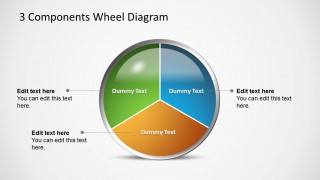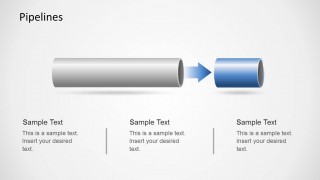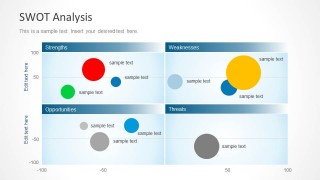Learn more how to embed presentation in WordPress
- Slides
- 36 slides
Published Nov 1, 2013 in
Health & Medicine
Direct Link :
Copy and paste the code below into your blog post or website
Copy URL
Embed into WordPress (learn more)
Comments
Presentation Slides & Transcript
Presentation Slides & Transcript
Dr.SEENAJ CHANDRAN,MD,Dip.DIABKIMS KOCHITitle LayoutDIABETES-CHALLENGES,ADVANCES & GLYCEAMIC VARIABILITY
Why is this important?Glyceamic variability and challengesCase studiesNew developmentsQuestions!!Overview
The Top 10s (number of people with diabetes)
The global burden366 million people have diabetes in 2011; by 2030 this will have risen to 552 millionThe number of people with type 2 diabetes is increasing in every country80% of people with diabetes live in low-and middle-income countriesThe greatest number of people with diabetes are between 40 to 59 years of age183 million people (50%) with diabetes are undiagnosedDiabetes caused 4.6 million deaths in 2011Diabetes caused at least USD 465 billion dollars in healthcare expenditures in 2011; 11% of total healthcare expenditures in adults (20-79 years)78,000 children develop type 1 diabetes every year
Glycosylated hemoglobin-HbAic most widely used clinical test measurement of blood glycated hemoglobin (also called hemoglobin A1C, glycohemoglobin, and glycosylated hemoglobin [HbA1c]). the average amount of A1C changes in a dynamic way reflects the mean blood glucose concentration over the previous six to eight weeks. A1C value of 7 percent --150 mg/dLA1C value of 9 percent --210 mg/dL
Key messagesMarked PPG excursions and glucose fluctuations that occur despite HbA1c levels <7.0%. Fluctuations are not sufficiently reflected by changes in HbA1c.Thus relying mainly on HbA1c at a target level of 7.0% may be inadequate for timely therapeutic adjustments and reducing the risk of cardiovascular complications.
Key learning'sThe same HbA1c may, in a portion of patients, generate different and unpredictable diurnal patterns with glucose fluctuations of different magnitude.May be suggested that a decreased amount of glycemic excursions without any improvement in HbA1c may result in an improved outcome by reducing oxidative stress and the risk of complications.Conventional measures of glycemic control in conjunction with intermittent glucose measurements not sufficient to optimize glycemic control. Short CGM periods under primary care conditions provide measures that have the potential of improving glycemic control. Such measures include the MAGE or other indices of glycemic instability, mean CGM sensor glucose range, and the time spent out of the euglycemic range.
Continuous Glucose MonitorSubcutaneous sensor attached to unit worn on belt.Typically worn for 3 days.Measures BG continually.Download graph of BG.Elucidates potentially unknown BG excursions.
Current treatment options Biguanides-Phenformin,MetforminSulfonylureas-Glemepride,glipizide etcMeglitidines-Repaglinide,NateglinideThiazolidinediones-PioglitazoneAlpha-glucosidase inhibitors-Acarbose,VogliboseDPP-4 Inhibitors-Sitagliptin,vildagliptin,Saxagliptin,Lanagliptin Plus INSULINS
10Strategy for Controlling HyperglycemiaSerum SugarCellular UptakeAbsorption from DietBiosynthesis in LiverInsulina-Glucosidase InhibitorsPancreasSulfonylureasMeglitinideBiguanides;thiazolidinedionesBiguanidesPharmacological Treatment of Type 2 DM
Adapted from Kieffer TJ, Habener JF. Endocr Rev. 1999;20:876–913; Ahrén B. Curr Diab Rep. 2003;2:365–372; Drucker DJ. Diabetes Care. 2003;26:2929–2940; Holst JJ. Diabetes Metab Res Rev. 2002;18:430–441; JANUVIA Local Physician Circular, MSD Pharmaceuticals Private Limited, INDIA.The Incretins
IncretinsIntravenous glucose fails to increase insulin response as effective as oral glucose intake.This is due to existence of Gut hormones in the enteroinsular axis which can increase insulin liberation by many folds following oral administration.They are collectively called as incretinsGLP1 Glucagon Like Peptide-1 Secretion from L cells of small intestine, Dependent on nutrient presence in the intestine Increases Insulin secretion from the Beta cells, suppress Glucagon secretion from Alpha cells (both glucose dependent), increase satiety, decrease GI motility etc GIP Glucose dependent Insulinotropic Polypeptide Secretion from K cells of small intestine Dependent on nutrient absorption Increases insulin biosynthesis and secretion from beta cells
Insulin Pens/VialsPre-filled with 300 units. Disposable.Dial dose in 1 unit increments up to 60 unit dose.Insulin Spray/Insulin patches-not very successful
Insulin PumpProgrammable insulin pumpholds 300 unitsinsulin is delivered through sub-Q infusion set/tubingRemote controldiscrete dosing
Types of Bariatric SurgeryPurely RestrictiveGastric BalloonsSleeve GastrectomyGastric adjustable banding Restrictive > MalabsorptiveShort-limb/Roux-en-Y gastric bypassMalabsorptive > RestrictiveBiliopancreatic diversion (BPD)BPD with duodenal switchLong limb Roux-en-Y gastric bypass
N Engl J Med. May 24 2007;356(21):2176-2183.
17 Islet cell TransplantationIslet transplantation has been investigated as a treatment for type 1 diabetes mellitus in selected patients with inadequate glucose control despite insulin therapy.Observations in patients with type 1 diabetes indicate that islet transplantation can result in insulin independence with excellent metabolic control
Management of DiabetesDIET-MEDICAL NUTRIONAL THERAPYEXERCISEDRUGSINSULINSURGERY FOR DIABETESISLET CELL TRANSPLANTATIONNOVEL INSULIN DELIVERY SYSTEMSNEWER DRUGS-DPP 4,LIRAGLUTIDE,EXANITIDESELF MONITORING OF BLOOD GLUCOSE
Glyceamic variabilityDiabetes is a cardiovascular equivalentPostprandial glucose (PPG) has been shown to be good predictor for cardiovascular mortality. (M. Hanefeld, Diabetologia 39 (1996) 1577–1583)Postchallenge glucose and glycemic spikes are more closely associated with cardiovascular disease than HbA1c. (T.S. Temelkova-Kurktschiev, Diab. Care 23 (2000) 1830–1834)Glucose fluctuations during postprandial periods activated oxidative stress even more specifically than sustained chronic hyperglycemia.Klaus-Dieter Kohnert et all Diabetes Research and Clinical Practice 77 (2007) 420–426
Studies have shownDiabetic patients overall stayed 29% of the day in the hyperglycemic range (>180 mg%). (B.W. Bode, Diab. Care 28 (2005) 2361–2366)Even in those well-controlled on oral drugs, PPG values exceeded 140 mg% after 57% of the meals. (L.C. Hay, Diab. Technol. Ther. 5 (2003) 19–26)Complete characterization of glycemia is best accomplished only by CGMS. (B.W. Bode, Diab. Res. Clin. Pract. 46 (1999) 183–190) Essential to identify distinct postmeal periods of hyperglycemia and intraday glucose variability.Klaus-Dieter Kohnert et all Diabetes Research and Clinical Practice 77 (2007) 420–426
Variations are a ruleGlucose variations are not limited to postprandial hyperglycemic excursions Such fluctuations are particularly marked in type 1 diabetes and, to a lesser degree, in patients with type 2 diabetes treated with insulin. Non–insulin-dependent patients can also experience such peak and- trough patterns with acute glucose variations. Peaks are usually corresponding to maximum values after meals, particularly at mid morning, while troughs are observed over inter-prandial periods. (Monnier L, Diabetes Care. 2002;25:737-741)Klaus-Dieter Kohnert et all Diabetes Research and Clinical Practice 77 (2007) 420–426
Oxidative damageThis elegant and unifying theory developed by Brownlee (Diabetes. 2005; 54:1615-1625) seems to indicate that activation of the oxidative stress by hyperglycemia plays a major role in the pathogenesis of diabetic complications.Exposure to glycemic disorders can be described as a function of 2 components: the duration and magnitude of chronic sustained hyperglycemia and the acute fluctuations of glucose over a daily periodKlaus-Dieter Kohnert et all Diabetes Research and Clinical Practice 77 (2007) 420–426
Chronic hyperglycemia but not glucose variability determines HbA1c levels in well-controlled patients with type 2 diabetesStudy done to determine the relationships between HbA1c, characteristics of hyperglycemia and glycemic variability in well-controlled type 2 diabetes (HbA1c < 7.0%).63 primary-care patients, with type 2 diabetes Aged 34–75 yearsDuration of hyperglycemia (>140 mg%) ….and Mean amplitude of glycemic excursions (MAGE) were analyzed from CGMS data and postprandial glucose during standardized meal test (PG MMT)Klaus-Dieter Kohnert Diabetes Research and Clinical Practice 77 (2007) 420–426
ResultsPatients were hyperglycemic for 5.7 h/day (median).They experienced 4.1 hyperglycemic episodes/day.78% exceeded PPG levels of 140 mg%. HbA1c, though associated with the extent of hyperglycemia (r = 0.40, p < 0.001), failed to correlate with MAGE. Multiple regression analysis demonstrated that HbA1c was predicted only by fasting glucose (R2 = 0.24, p < 0.001) …but NOT by PPG MMT, duration of hyperglycemia, nor MAGE.ConclusionIn well-controlled type 2 diabetes, HbA1c correlates with chronic hyperglycemia but not with glucose variability. The study data suggest that chronic sustained hyperglycemia and glucose fluctuations are two independent components of dysglycemia in diabetes.Study found that the number of hyperglycemic episodes or the peak PPGMMT concentrations to be weakly associated with HbA1c, accounting for only a small proportion of variability in these glycemic measures attarget HbA1c.Klaus-Dieter Kohnert Diabetes Research and Clinical Practice 77 (2007) 420–426
Case no 142 y/o female,school teacher mother of two with hx of GDM 6 years ago, term 3.2 male infantHas not been seen for follow-up in 3 yearsFBS done at annual check up 149Does this patient have type 2 diabetes? What next?
Diagnosis of diabetes generally requires 2 abnormal valuesPatient is at high risk for developing type 2 diabetesGDM is a pre-diabetes conditionRepeat FBS 3 days later……. Repeat FBS 135Dx: Type 2 diabetes - FBS >126 on 2 separate occasions- Could have done an A1C as wellWhat should be done next for this patient?
Diabetes DiagnosisCategory FPG (mg/dL) 2h 75gOGTT A1C Normal <100 <140 <5.7Prediabetes 100-125 140-199 5.7-6.4Diabetes >126** >200 >6.5Or patients with classic hyperglycemic symptoms with plasma glucose >200** On 2 separate occasionsDiabetes Care 34:Supplement 1, 2011
Diabetes Educator and DieticianSMBGLifestyle (for now) for BP and lipidsMake a list of activity, try to start with 10 min/day, work up to 150 min/weekStart Metformin 500mg BID, advance to 850-1000 mg BID Most newly diagnosed patients should start Metformin (current ADA recommendation)
Case no 254 y/o bank employeeDiagnosed with type 2 diabetes after 2 fasting blood sugars of 154 and 142 and A1C of 6.8Pre-existing HTN and dyslipidemiaCholesterol 240 (<200)TG’s 205 (<150)HDL 30 (>40)LDL 129 (<100) Started Metformin 500 mg BIDBP, cholesterol tx with statin and ACEI (need titration), could add fish oil, on ASAReferred to Diabetes Educator and DieticianRecommend developing graduated exercise plan (exercise prescription)Six months after diagnosis A1C = 6.8% (target <7%)
Three years later, patients A1C has risen to 8.4% (target <7%)Blood pressure and cholesterol effectively treated (ACEI, HCTZ, Simvistatin, Fish Oil)Now what? Choices includeAdding a basal insulin once dailyAdding any other oral agentAdding exenatide or liraglutideAny of these are good choicesChoice may be made on individual factorsReinforce lifestyle managementBasal insulinAdvantages: Once-daily, comes in pen, easy, likely good results, durable over timeDisadvantages: potential hypoglycemia (not difficult to manage/avoid), weight gain, likely will need combo with another insulin later (not a difficult transition)Additional oral agentAdvantages: EasyDisadvantages: eventually lose effectiveness, weight gain (sulfonylureas, TZD’s)Other injectable (exenatide or liraglutide)Advantages: Comes in pen, easy, may have weight loss Disadvantages: eventually lose effectiveness, nausea, vomitingPatient chose additional oral agent (sitagliptin)A1C:6 months later = 7.4% (target <7%)3 years later = 8.1% (target <7%)Basal insulin eventually started once dailySitagliptin continuedMetformin continued
Case no 387 y/o lady resident of a oldage homeType 2 Diabetes for 20 yearsPMH: HTN, dyslipidemia, mild dementia, hypothyroidism, CVA, CHF Stage 3 CKD (GFR 37, Creatinine 1.0)Current meds:Metformin 500 mg BIDDaonil 5 mg BIDLisinopril 10mg dailyFurosemide 20 mg dailyASA 81 mg dailySimivistatin 20mg dailyLipids adequately treatedBP 142/86A1C 9.0What is appropriate for this patient?
Metformin, sulfonylurea NOT good choices >80 y/o, or declining renal functionMetformin NOT good choice with CHF risk or historyBP abnormal- high risk of recurrent CVA Lipids- Evidence show benefit of treating to age 85, case by caseA1C = 8.0 appropriate for this age group -less risk of hypoglycemia vs. lower A1C (demented poor at reporting symptoms) -better alertness than higher A1C BP: Increase Lisinopril to 20mg, monitor creatinine and K+Lipids: Continue present DM: ?
Choices for Treatment of DM in elderlySingle injection of basal insulin once daily ORGliptin (sitagliptin or saxagliptin) Both have low risk of significant hypoglycemia, can be renally dosed, easy to use, few significant drug interactionStarted on basal insulin lantus 8 units with evening meal (patient likely has little beta cell function)-+ 3 meal time doses of insuman R with reg monitoringMetformin stoppedDaonil stoppedA1C 3 months later 8.2
SummaryPatients have different requirements depending on diabetes statusMany choices exist to individualize treatmentReinforce lifestyle, treat blood sugar, lipids, BPIndividualisation and awareness is the key
THANK YOU FOR YOUR PATIENCE ACKNOWLEDGEMENTS: AMERICAN DIABETES ASSOCIATION INTERNATIONAL DIABETES FEDERATION AND OUR PATIENTS AND TEACHERS WHO TAUGHT US THE ART OF MEDICINE
More Presentations

By gsquaresolutions
Published Jul 30, 2013

By gsquaresolutions
Published Oct 28, 2013

By gsquaresolutions
Published Oct 31, 2013

By gsquaresolutions
Published Nov 1, 2013





